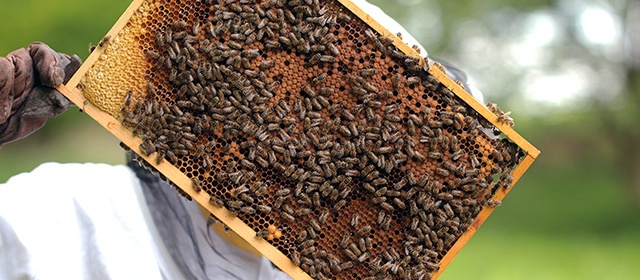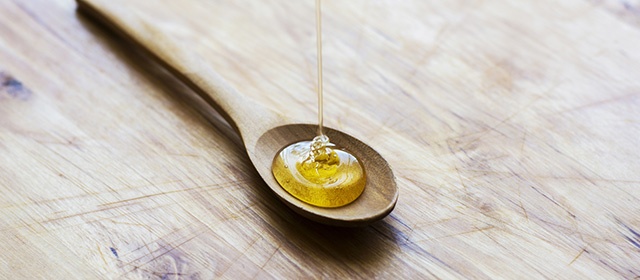The Turk family has been involved in fruit farming for more than 100 years, whereas spirit distilling goes even further back in time. At the end of the 19th century our great grandfather was already buying Dalmatian juniper plants from big merchants such as Pogačnik and Sever from Ljubljana. He was making superb juniper brandy and supplying pubs throughout Upper Carniola with it.
Until 1944 the farm also had an on-site pub where locals would come together every Sunday afternoon. Oftentimes the pub organized a village fete where supplies of Turk spirits were plentiful.
On the farm the men were getting increasingly involved in fruit farming and spirit distilling, whereas the women engaged themselves in picking medicinal plants in the surrounding meadows and forest and attended to the family’s well-being.
The last generation has brought together the strength of both men and women. From blending the men’s fundamentals and the women’s essence of life a wonderful line of natural homemade herbal brandies and liqueurs was born. Nowadays we promote the principle of homeostasis which gives rise to a variety of healthy honeys containing herbs and essential oils.
If you are in the area, a visit to Rovte is a must. Come to a small village in the midst of the pristine nature at the foot of Jamnik hill and pay a visit to our farm. It will be our pleasure to introduce and offer trials of our products to you.
No bees, no life
Honey bees have been around as long as flowers, collecting pollen and nectar which become honey. As bees gather pollen, they also pollinate plants. It is estimated that one third of the world’s crop production is pollinated by bees.
Without bees, life would disappear. Or as Albert Einstein long ago warned us:
"If the bee disappears from the surface of the earth, man would have no more than four years to live. No more bees, no more pollination, no more plants, no more animals, no more man.” As a food, honey has been consumed for more than 8,000 years. Some of the earliest evidence about honey consumption is from cave painting near Valencia, Spain. Called
"liquid gold” and
"the nectar of the Gods”, honey was known for its healing properties already in antiquity. Pythagoras said that he
"would have died 40 years earlier if he didn’t eat honey”, whereas Aristotle wrote that honey falls from the sky when stars rise. According to ancient Egyptians honey was the tears of the sun god Ra.

Homemade Slovenian honey
Honey is a sweet, thick, tasty and aromatic liquid with colours ranging from golden to bronze. There are many varieties of honey. Its colour, flavour, and even aroma may differ depending on the whereabouts of the floral source visited by honey bees. The taste of honey varies from location to location as well as from month to month. Therefore
each honey type is unique and some are better than others.
It is essential that bees collect nectar in
clean and natural environment, free of pollution and conventional farming which includes the excessive use of pesticides, insecticides, and herbicides. Otherwise the residues of these synthetic chemicals may end up in honey.
Slovenia is a small, geographically diverse, extremely clean and eco-friendly country producing
premium honey. Geographical diversity, various climate zones, and a varied flora in such as small area enable production of many different types of honey. Therefore Slovenian honey is one of the top-ranked honeys in the world.
In Slovenia honey is collected by autochthonous Carniolan honey bee (Apis mellifera carnica) also called "Lady bee” for its modesty, industriousness, and diligence. The Carniolan bee is indigenous to the Alpine region of Upper Carniola, and has spread naturally southwards to the whole of the Balkan peninsula as well as northwards to Austria. It is considered one of the most popular bees in the world because of its uniqueness and innate immunity.
Thanks to its properties
Slovenian honey is exceptional, reaching much
higher standards from those that are generally accepted by the European Union Honey Regulations. Hydroxymethylfurfural (HMF) content, which is an indicator of the level of active enzymes present in honey, set by EC is 40 mg/kg. In Slovenia, however, the HMF levels are 15 mg/kg or even lower. This is a clear indicator that all health-giving properties of honey remain preserved.

Composition of honey
Honey is an aromatic, dense and sticky substance produced by industrious bees. It is a great substitute to sugar and yet so much more than that.
Honey consists of 80% sugar. The proportion between fruit sugar or fructose (38-42%) and grape sugar or glucose (30-32%) in honey varies from one type of honey to another, whereas sucrose is present only in modest quantities. Honey is also composed of water which must not exceed 20%. In Slovenia, however, the maximum water content permitted is 18.6%. Lastly, honey also includes other ingredients that make up about 6%:
- different types of enzymes (invertase, diastase, catalase, glucose oxidase, phosphatase, and peroxide)
- vitamins (vitamin C, vitamin B complex)
- minerals (potassium, iron, copper, manganese, zinc, calcium, phosphorus, silicon, magnesium, sodium, iodine, etc.)
- hormones (acetylcholine)
- flavonoids (chrysin, galangin, and kaempferol)
- inhibins or antibacterial substances (glucose oxidase, hydrogen peroxide)
All honey crystallizes
The tendency of honey to crystallize depends mostly on the varying ratios of sugars. The more glucose in honey, the sooner it will crystallize. The speed of crystallization of a particular honey type depends on the ratio of glucose to fructose, the amount of water, and the storage temperature. Do not keep your honey some place too warm, and it is not a good idea to store it in the refrigerator. Additionally, since honey absorbs and holds moisture from environment, it may easily go bad. So store your honey properly sealed in a dry place. By the way, always use a clean spoon to scoop honey from a jar. Avoid bringing the spoon to your mouth and then dipping it in the jar again.
Honey crystallization is a natural phenomenon. Sooner or later honey will crystallize. Some types of honey crystallize within a few weeks, others within a few months. Only some natural honey types, for example acacia honey, will crystallize very slowly. During crystallization process honey turns from dense liquid to a solid state of crystallized honey without affecting its chemical composition.
Crystallized honey preserves all healing qualities of the liquid honey. However, if you do not like it in this state, crystallized honey can be brought back to liquid consistency by immersing a honey jar in warm water. The warming temperature should not go beyond 35° C as overheating may damage the healing properties of honey.